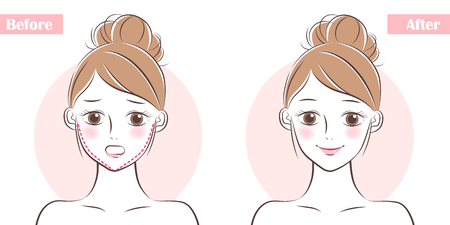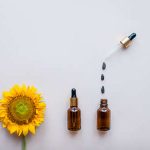Understanding Acne-Prone Skin
If you’re dealing with frequent breakouts, you’re not alone. Acne-prone skin is a common concern for teens and adults alike in the United States. But what exactly does it mean to have acne-prone skin, and why is picking the right cleanser such a big deal? Let’s break it down.
What Makes Skin Acne-Prone?
Acne-prone skin tends to develop pimples, blackheads, and whiteheads more easily than other skin types. This happens because of several factors:
- Excess Oil Production: Overactive oil glands can clog pores.
- Dead Skin Buildup: Dead skin cells that don’t shed properly can block pores.
- Bacteria: Bacteria like Cutibacterium acnes thrive in clogged pores, causing inflammation.
- Sensitivity: Acne-prone skin often reacts more to harsh ingredients or environmental stressors.
Why Your Cleanser Matters
The cleanser you use plays a crucial role in your skincare routine. The right cleanser can help manage breakouts by gently removing excess oil, dirt, makeup, and bacteria—without stripping your skin or making it feel dry and tight. Using the wrong cleanser may actually make things worse by irritating your skin or clogging your pores further.
Common Signs You Have Acne-Prone Skin
| Sign | Description |
|---|---|
| Frequent Breakouts | Pimples appear regularly on your face, chest, or back. |
| Oily Shine | Your skin looks shiny or greasy shortly after washing. |
| Clogged Pores | You notice blackheads or whiteheads often. |
| Sensitivity | Your skin stings or gets red easily with new products. |
Key Takeaway: Choose Wisely!
If you have acne-prone skin, every step in your routine matters—especially cleansing. Picking a gentle but effective cleanser is the first step toward clearer, healthier-looking skin. In the next section, we’ll explore what ingredients and types of cleansers are best for acne-prone skin.
2. Key Ingredients to Look For
When choosing a cleanser for acne-prone skin, it’s important to focus on ingredients that not only fight breakouts but also keep your skin calm and balanced. Here are some of the most effective ingredients you should look for in your next cleanser:
| Ingredient | What It Does | Why It’s Good for Acne-Prone Skin |
|---|---|---|
| Salicylic Acid | Penetrates pores to dissolve oil and dead skin cells | Helps unclog pores and prevent new breakouts without over-drying |
| Benzoyl Peroxide | Kills acne-causing bacteria on the skin’s surface | Reduces inflammation and targets active pimples effectively |
| Gentle Exfoliants (like Lactic Acid) | Removes dead skin cells with mild chemical action | Smooths texture and keeps pores clear without harsh scrubbing |
| Aloe Vera or Chamomile Extract | Soothes irritation and calms redness | Balances strong acne-fighting ingredients to avoid irritation |
| Ceramides or Glycerin | Helps maintain the skin’s natural moisture barrier | Keeps skin hydrated and prevents dryness from acne treatments |
How to Read Labels at the Drugstore or Online
Look for cleansers that list these ingredients near the top of their ingredient list. In the U.S., many popular brands clearly label their products as “acne-fighting” or “gentle for sensitive skin.” Avoid cleansers with lots of added fragrances, alcohol, or harsh scrubs, which can make irritation worse.
![]()
3. Ingredients to Avoid
When you have acne-prone skin, choosing the right cleanser isn’t just about what’s included—it’s also about what’s left out. Some ingredients can actually make breakouts worse by clogging pores or irritating your skin. Here are a few common ingredients to watch out for:
Potentially Problematic Ingredients
| Ingredient | Why to Avoid |
|---|---|
| Alcohol (denatured, SD alcohol) | Can dry out and irritate the skin, leading to more oil production and possible breakouts. |
| Heavy oils (like mineral oil, coconut oil) | These can clog pores, making acne worse for people with oily or acne-prone skin. |
| Sulfates (Sodium Lauryl Sulfate) | Harsh cleansing agents that strip away natural oils and disrupt the skin barrier. |
| Fragrances and Perfumes | May cause irritation or allergic reactions, especially on sensitive or inflamed skin. |
| Silicones (Dimethicone, Cyclopentasiloxane) | Might trap dirt and oil in pores if not properly washed off. |
Check Your Labels
When shopping for a cleanser, take a look at the ingredient list. If you spot any of the items above near the top of the list, it might be best to choose something else—especially if you’ve had trouble with breakouts before. Opt for gentle, non-comedogenic formulas designed specifically for acne-prone skin. This way, you’re giving your skin a better chance to stay clear and healthy without extra irritation.
4. Choosing the Right Cleanser Type
Picking the right cleanser for acne-prone skin can feel overwhelming, especially with so many options out there. The most popular types are gel, foam, and cream cleansers. Each has its own pros and cons, and the best choice really depends on your specific skin needs. Let’s break down the differences so you can find what works for you.
Gel Cleansers
Gel cleansers are lightweight and often clear. They’re designed to deeply cleanse the skin, removing excess oil and dirt from pores. This type is especially good for people with oily or combination acne-prone skin because it helps control shine without being too harsh.
Best for:
- Oily skin
- Combination skin
- Active breakouts
Foam Cleansers
Foam cleansers start as a cream or liquid and turn into a rich lather when you add water. They’re effective at lifting away oil and impurities but can sometimes be a little drying if used too often. Foam cleansers are a good option if you like that squeaky-clean feeling after washing your face.
Best for:
- Normal to oily skin
- Younger skin types
- Mild to moderate acne
Cream Cleansers
Cream cleansers have a smooth, creamy texture and are usually more hydrating than gels or foams. They gently cleanse without stripping away natural oils, making them perfect if your acne-prone skin also feels dry or sensitive.
Best for:
- Dry or sensitive skin
- Mature skin
- Redness or irritation alongside acne
Quick Comparison Table
| Type | Texture | Main Benefits | Best For |
|---|---|---|---|
| Gel Cleanser | Lightweight, clear gel | Cleans deep, controls oil, unclogs pores | Oily & combination skin, active acne |
| Foam Cleanser | Creamy turns foamy/lathery | Lifts oil & impurities, refreshing feel | Normal to oily skin, younger users, mild acne |
| Cream Cleanser | Smooth, creamy texture | Mild cleansing, adds moisture, soothes irritation | Dry/sensitive skin, mature skin, redness/irritation with acne |
Tips for Picking Your Cleanser:
- If your skin feels tight or itchy after washing, try switching to a cream cleanser.
- If you notice extra shine by midday or frequent breakouts, a gel cleanser might help.
- If you wear heavy makeup or sunscreen daily, consider double cleansing—start with a cream or oil-based cleanser followed by a gentle gel or foam cleanser.
- Avoid products with alcohol or strong fragrances as they can irritate acne-prone skin.
Your perfect match depends on your unique needs and how your skin feels day-to-day. Don’t be afraid to try different types until you find what keeps your acne in check while leaving your face comfortable and clean.
5. Building a Gentle Cleansing Routine
When you have acne-prone skin, finding the right balance in your cleansing routine is key. Over-washing or using harsh products can strip your skin’s natural oils, making breakouts worse and damaging your skin barrier. Here are some practical tips for creating a gentle yet effective cleansing routine to help keep your skin healthy while managing acne.
How Often Should You Cleanse?
For most people with acne-prone skin, cleansing twice a day—once in the morning and once at night—is enough. Washing more often can dry out your skin and trigger more oil production, which can make acne worse. If you sweat heavily after a workout, it’s okay to wash your face again, but keep it gentle.
Steps for an Effective Yet Gentle Cleanse
| Step | What to Do | Why It Matters |
|---|---|---|
| 1. Wash Your Hands First | Clean hands before touching your face. | Prevents transferring dirt and bacteria. |
| 2. Use Lukewarm Water | Avoid hot water; stick to lukewarm. | Protects natural oils and prevents irritation. |
| 3. Apply Cleanser Gently | Use fingertips to massage cleanser in circular motions for 20-30 seconds. | Cleans without causing micro-tears or irritation. |
| 4. Rinse Thoroughly | Make sure all cleanser is washed off. | Residue can clog pores or cause dryness. |
| 5. Pat Dry with a Soft Towel | Avoid rubbing; gently pat your skin dry. | Prevents unnecessary friction and redness. |
Extra Tips for Protecting Your Skin Barrier
- Skip Scrubs and Brushes: Physical exfoliants can be too harsh for acne-prone skin. Stick to your hands for cleansing.
- Avoid Double Cleansing Unless Necessary: If you wear heavy makeup or sunscreen, you might need a double cleanse, but use two very gentle cleansers.
- No Harsh Ingredients: Steer clear of products with alcohol, fragrance, or strong acids unless prescribed by a dermatologist.
- Moisturize After Cleansing: Even oily or acne-prone skin needs moisture to stay balanced and healthy.
Your Daily Cleansing Checklist
- Cleansing no more than twice daily (plus after sweaty workouts)
- Lukewarm water only—never hot!
- No scrubbing tools or rough towels
- Mild, non-stripping cleanser chosen just for your skin type
- A gentle moisturizer to finish up and lock in hydration
Remember:
A gentle routine helps protect your skin’s natural barrier, making it easier to manage acne and maintain overall skin health. Consistency beats intensity—stick to these basics every day for best results!


